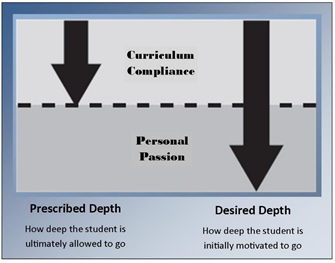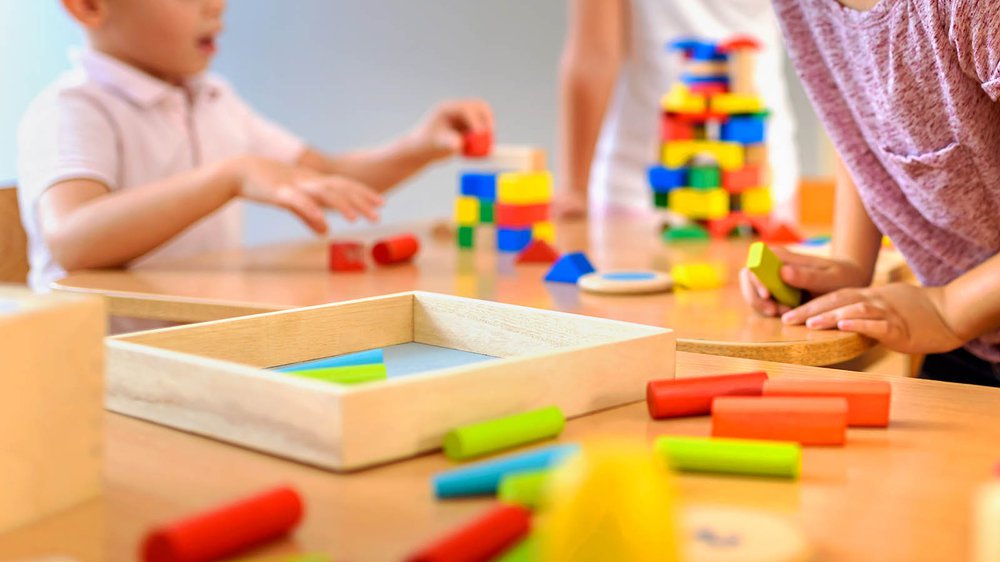Young children enter school full of curiosity and wonder, but for far too many learners this unbridled enthusiasm for discovery is systemically stifled throughout their educational journey. Teachers inhibit creativity in many students by prioritizing the covering of information far more than the uncovering of innovation. Our students need their natural sense of wonder to be supported and nurtured, not suffocated and nullified.
Classrooms obviously require certain rules and routines to function in a safe and orderly manner. Within these parameters, however, students must be valued and rewarded more for curiosity and creativity, than for mere compliance. After all, change will be the operative word for our students moving forward, and creative people are more flexible and adaptable. Validating creativity in our classrooms will help ensure our students adjust well to the many uncertainties they will confront in the future.
Modelling Growth Mindset
Creativity triggers innovation, and innovation clearly requires considerable risk-taking and divergent thinking. Creative classrooms are full of strong proponents of the growth mindset, which is grounded in the belief that effort and perseverance are the cornerstones of any sustainable learning. Teachers and students alike are confident risk-takers who relish new challenges and embrace related errors and misconceptions as both inevitable and invaluable parts of the learning process. Students need teachers who routinely and enthusiastically escape their comfort zone, and truly embrace a “Do As I Do” philosophy in their classrooms.
Task Breadth and Depth
To fully unleash their creativity, students need to be unshackled from textbooks and freed from the daily deluge of worksheets. They need opportunities to regularly examine, extend, and explore rich open-ended tasks. These tasks need to be released from their individual subject silos and allowed to cross-pollinate into interdisciplinary learning opportunities. When one of these cross-curricular tasks clearly resonates with students, they should be encouraged to continue exploration to their desired depth. If students are routinely denied opportunities to explore concepts beyond basic curriculum compliance, they will undoubtedly become content to simply memorize the content.

Quality Over Quantity
All students must have routine opportunities to explore complex tasks, that are both inclusive and inspiring. Complex tasks offer multiple entry points to include all students, yet also trigger students’ curiosity and creativity. These types of tasks require a much deeper kind of thinking, as outlined in the revised Bloom’s Taxonomy. The challenge, or difficulty, associated with far too many tasks, is simply the quantity of material students must remember. Task difficulty is all about quantity, whereas task complexity is all about quality. Creative, innovative learning has everything to do with how much the student uncovers, rather than how much the teacher covers.
Collaboration
Creativity does not exist in a vacuum, and students need routine opportunities to work collaboratively with groups of classmates on interdisciplinary projects that are of genuine interest to all members. Learners benefit greatly from sharing different perspectives, as this process lays the foundation for creative exploration. Creativity is greatly enhanced by divergent thinking and frequent brainstorming. The collective contributions from a variety of learners produce a kind of creative synergy, as their thoughts often combine to generate even more thought-provoking ideas and suggestions. This process becomes self-perpetuating and ignites innovation. As learners discover more, they want to discover, and uncover, even more.
Authentic Student Engagement
This sense of collaboration requires all educators to reassess their priorities when it comes to student engagement. All our classrooms must value passionate innovation far more than traditional programmed recitation. As such, educators must also stop viewing student engagement through a classroom management lens, as silence in a classroom is definitely not always golden. Creativity and innovation facilitate explorations and expositions, which undoubtedly will lead to elevated voices and passionate discourse. Students need to feel both intellectually challenged and purposefully connected to a given task in order to be authentically engaged. Since creativity is all about bringing one’s imagination to life, it represents the epitome of authentic engagement.
Pause For The Cause
Fostering creativity in our learners certainly has both an individual and collective component. Students need time to collect their own thoughts on a topic, and then gather with others to share them. In our modern world of instant access to any and all information, students are understandably accustomed to receiving immediate gratification for their efforts. In terms of fully developing their individual and collective creativity, however, it’s imperative to allow their thoughts time to percolate, as speed is one of the true enemies of creativity and innovation. As such, teachers need to schedule some breaks in creative exploration and collaboration, which could last for a few hours, or, better yet, a few days. This will give students time to reflect on their work, ponder other possibilities, and ultimately generate more questions and challenges.
Looking Ahead
Teachers need to constantly fuel students’ creativity and ask lots of open-ended questions. Education is no longer about explaining all the answers, but rather about exploring all the questions. It’s all about having students ignite the future, rather than simply recite the past.
Embracing students’ innate sense of creativity greatly enhances both their personal passion and professional preparation. It helps motivate and energize them in their current studies, as well as better prepare them for the challenges and opportunities that will undoubtedly present themselves in a future world full of so many unknowns.
Jamie Bricker was a long-time elementary school administrator and teacher from just outside Toronto, Ontario. He is now an international educational writer and speaker. He can be contacted at www.jamiebricker.com.











